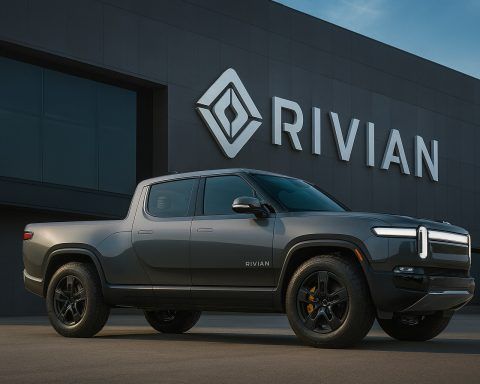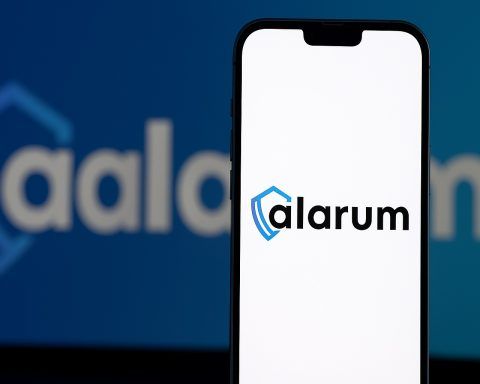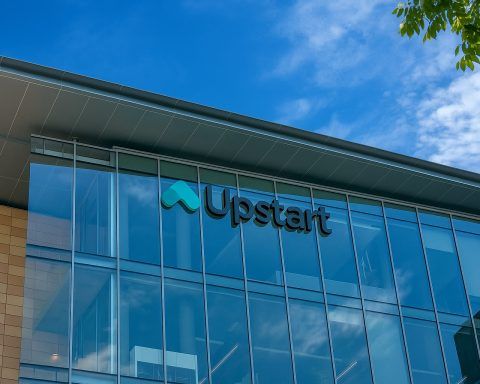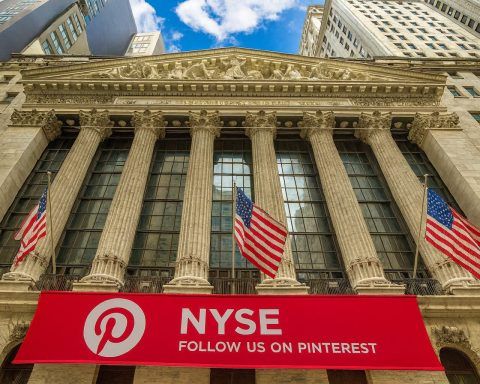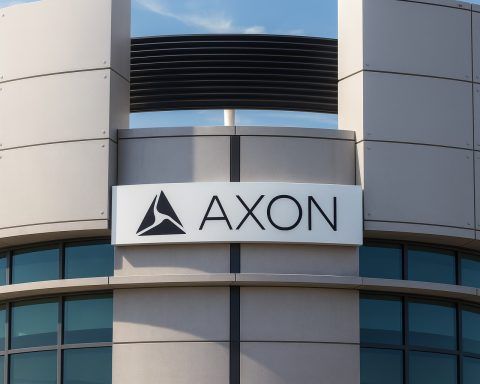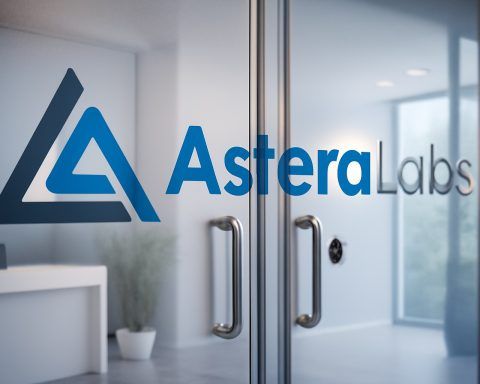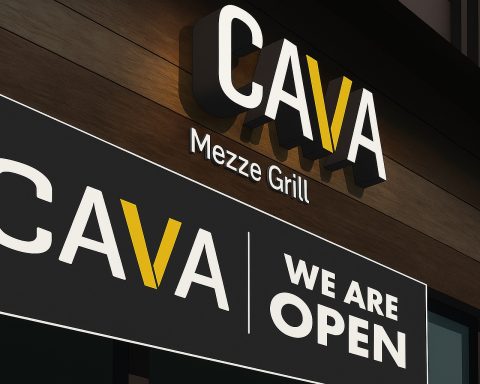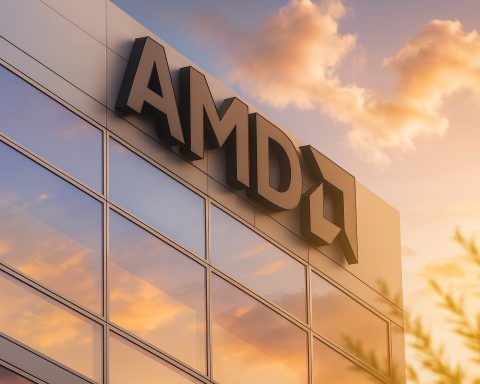- “Big Short” bets on AI high-flyers: Famed investor Michael Burry’s Scion Asset Management disclosed massive bearish put option positions against Nvidia and Palantir (covering ~1 million Nvidia shares and 5 million Palantir shares) worth about $1.1 billion in total [1]. These put contracts – which profit if share prices fall – make up nearly 80% of Scion’s $1.38 billion portfolio [2], a dramatic bet that today’s AI-driven stock euphoria may be peaking.
- AI stocks in stratosphere: Both target companies have seen explosive gains in 2023-2025 amid AI mania. Nvidia – now the world’s first $5 trillion company by market cap – has surged over 50% year-to-date and 1087% since late 2022 [3], as demand for its AI chips skyrocketed. Palantir shares have rocketed 170%+ this year (over 300% in the past 12 months) [4], fueled by investor excitement around its AI and defense software, with quarterly revenue soaring 63% year-on-year in Q3 [5]. Palantir stock hit record highs (over $140 by mid-2025) but tumbled ~4% in after-hours trading following its recent earnings release [6], hinting at jitters around lofty expectations.
- Bubble warning echoes of 2000: Burry – renowned for predicting the 2008 housing crash – warns today’s AI boom mirrors the dot-com bubble. After a long silence on X (Twitter), he posted a cryptic warning: “Sometimes, we see bubbles… Sometimes, the only winning move is not to play” [7]. Days later, he shared evidence of an “extreme imbalance” in AI: a book excerpt recalling how <5% of U.S. telecom capacity was used in 2000 and “thousands of miles of expensive fibre optic networks remained ‘unlit’” in the ground [8]. Burry drew a parallel to massive AI infrastructure spending today – highlighting tech CapEx growth “matching the Tech Bubble of 1999-2000” even as cloud-computing growth decelerates [9]. He even flagged a chart called “How Nvidia and OpenAI Fuel the AI Money Machine,” suggesting a circular hype cycle of big tech investments feeding each other [10]. In essence, Burry suspects an AI “bubble” fueled by frenzy and overinvestment – and he’s put big money behind that view.
- Experts divided on AI frenzy: Top tech figures and investors don’t agree on whether AI is a bubble. OpenAI CEO Sam Altman says investors are overexcited: “When bubbles happen, smart people get overexcited about a kernel of truth… Are we in a phase where investors as a whole are overexcited about AI? My opinion is yes,” Altman has warned [11]. Bill Gates also sees shades of dot-com in AI: “Absolutely, there are a ton of these investments that will be dead ends,” he said, though he calls AI “the biggest technical thing ever in my lifetime” [12]. On the other side, billionaire Mark Cuban insists today’s AI landscape is not like 1999, noting that unlike dot-com era fluff, “We’re not seeing funky AI companies just go public… [In 2000] people were creating companies with just a website… that’s a bubble… You don’t see that right now” [13]. Nvidia’s own CEO Jensen Huang flatly said, “I don’t believe we’re in an AI bubble,” arguing the boom is driven by a real shift to new computing models and genuine demand for AI’s capabilities [14]. The debate is fierce: some industry leaders (even within the same sector) see euphoria outrunning reality, while others believe AI’s transformative growth is only beginning – meaning any market froth is justified by fundamentals.
- Stocks outlook – hype vs. reality: Burry’s wager is a bet that gravity will catch up with these sky-high valuations. Palantir now trades at extreme multiples – by mid-2025 its stock reached ~80× forward sales and over 500× earnings, far above other software peers [15] [16]. Several Wall Street analysts have “Sell” or “Underperform” ratings on Palantir despite its rapid growth, calling the valuation “excessive” [17]. Some note Palantir’s market price already prices in years of growth (one analyst pegs it at ~57× 2026 revenue and ~140× free cash flow) [18], and insider shareholders have been cashing out shares lately [19] – signs that the optimism may be overdone. Nvidia, even at a record $5 trillion valuation, has drawn more optimism from the street: it trades around 35× next year’s earnings with hefty 70% profit margins [20], which some strategists call “defensible valuations” for the dominant AI chip supplier. Many analysts remain bullish – 91% of Wall Street ratings on Nvidia are Buys, and major banks continue to lift price targets [21] [22]. Bulls argue that unlike 2000, AI demand is real (every GPU Nvidia makes is quickly sold and put to use – “no dark GPUs” sitting idle) [23] [24], and that strong earnings growth backs up the stock surge [25]. Indeed, one CIO quips “the great AI bubble doesn’t look like it’s close to popping” as long as data-center orders keep rolling in [26]. Still, even enthusiasts acknowledge “general market euphoria” is a factor [27]. The road ahead splits: Some predict Nvidia could reach $10 trillion in value [28] and see AI as a long-term revolution, while skeptics like Burry warn that a painful reckoning may be inevitable – the only uncertainty is when.
Burry Targets an “AI Bubble” with Big Short Bets
Michael Burry – best known for his prescient “Big Short” against the 2000s housing bubble – is now taking aim at the AI stock frenzy. In a regulatory filing for Q3 2025, Burry’s firm Scion Asset Management revealed huge new put option positions against two of the stock market’s hottest AI names: Nvidia and Palantir Technologies [29]. Put options are contracts that increase in value when the underlying stock falls, so these represent a high-conviction bet on a price decline. Scion’s disclosure showed put options on ~1,000,000 Nvidia shares (worth $186.6 million) and ~5,000,000 Palantir shares (worth $912 million) [30], opened during the third quarter of 2025. Notably, Burry held no positions in either stock in the prior quarter [31], underscoring that this is a fresh, deliberate wager. The combined notional value (~$1.1 billion) is enormous – comprising nearly 80% of Scion’s entire portfolio as of the filing [32] – making this one of Burry’s most concentrated bets ever made public.
Such a bold position from the famously contrarian investor suggests Burry is “calling the top” on the AI boom. It comes on the heels of Burry breaking a long silence on social media to issue warnings about speculative excess. On October 31, he posted a terse message on X (formerly Twitter): “Sometimes, we see bubbles. Sometimes, there is something to do about it. Sometimes, the only winning move is not to play.” [33]. This cryptic statement – accompanied by a still of actor Christian Bale (who portrayed Burry in The Big Short film) [34] – hinted that Burry sees a bubble forming in markets once again, and perhaps that sitting on the sidelines (or betting against it) might be wiser than chasing the hype. Just days later, Scion’s early 13F filing confirmed Burry is indeed acting on that belief, effectively positioning himself for an “AI bubble” burst.
Why Nvidia and Palantir? These two stocks have been among the biggest winners of the AI investing frenzy, and emblematic of the market’s ebullient sentiment around anything AI-related. By betting against them, Burry is targeting what he likely views as the most overhyped, overvalued corners of the market – much as he did with subprime mortgages in 2005-2007. “His hedge fund’s latest trades hint that the famed contrarian thinks another bubble is forming,” Business Insider notes [35]. In effect, Burry is reprising his “Big Short” playbook: identify an asset bubble driven by euphoria and leverage, take a contrarian short position via derivatives, and wait for reality to reassert itself.
AI Stocks Skyrocket: Nvidia and Palantir’s Meteoric Rise
Burry’s bearish bet didn’t emerge from a vacuum – it’s a direct response to the dazzling surge in AI-related stocks. Few companies illustrate this better than Nvidia, the semiconductor firm at the heart of the AI hardware boom, and Palantir, a software company marketing itself as an AI-driven platform for big data and defense. Both have seen their share prices soar to unprecedented heights in 2023-2025, stoking both investor excitement and fears of a bubble.
Nvidia (NVDA), in particular, has been on a historic tear. The company’s chips are essential for training and running advanced AI models, creating insatiable demand from Big Tech firms and cloud providers. In late October 2025, Nvidia’s stock hit an all-time high – pushing Nvidia to become the first company ever to breach a $5 trillion market capitalization [36]. (For context, a $5 trillion valuation is nearly double that of Apple or Microsoft at their peaks.) This milestone marked a more than tenfold increase in Nvidia’s value since late 2022 – Reuters notes Nvidia shares are up 1087% since the launch of OpenAI’s ChatGPT in Nov 2022 [37], a period in which AI enthusiasm ignited across industries. Even on a year-to-date basis, Nvidia in 2025 has climbed roughly 54% (after already doubling in prior years) [38]. By any measure, these gains are extraordinary. Investors have essentially re-rated Nvidia from a leading chipmaker to something akin to the “beating heart” of the AI revolution [39].
What’s driving this staggering rise? Fundamentally, explosive growth in Nvidia’s earnings – thanks to AI – has provided some justification. The company’s revenue and profit have smashed expectations as cloud giants and startups alike race to buy more of its high-end GPUs for AI data centers. In fact, Nvidia’s recent guidance projected an unprecedented $54 billion in revenue for the next quarter (Q4), an enormous jump from the year prior [40]. Gross margins are around 70% [41], so much of that revenue translates to profit. This led one market strategist to argue that Nvidia’s ascent, while mind-boggling, “has come with defensible valuations”: even at $5 trillion, the stock trades around 35× next-12-month earnings, not the triple-digit P/Es seen in dot-com days [42]. Moreover, unlike tech bubbles of the past where supply far overshot demand, Nvidia can scarcely keep up with current demand. Every AI chip it produces is immediately shipped and put to use; as one analysis put it, there are “no ‘dark GPUs’” sitting idle [43], whereas in 2000 vast swathes of fiber optic cable lay unused. This suggests a real uptake of AI technology across the economy, bolstering the bull case that Nvidia’s valuation, while rich, is grounded in tangible earnings and future growth potential.
Palantir (PLTR) has likewise ridden the AI wave to dizzying heights, albeit from a smaller base. The data analytics firm, known for its government and military contracts, pivoted hard into the AI narrative in 2023-2024 by launching its “Artificial Intelligence Platform” and touting itself as an AI leader. Investors responded with enthusiasm: Palantir’s stock has more than quadrupled in the past year [44]. By early November 2025, shares were up about 174% year-to-date [45] and had reached new all-time highs (surpassing even the meme-stock peak it hit shortly after its 2020 IPO). On November 3, 2025, Palantir’s stock closed at a record (around the mid-$180s per share) before retreating 4.3% in after-hours trading following its Q3 earnings announcement [46]. That pullback hardly dented its remarkable run: over the past 12 months, Palantir’s market cap swelled to levels few could have imagined a year prior.
Underpinning Palantir’s rally is a mix of improving financials and massive investor hype. The company has finally achieved consistent profitability in 2023, and its revenues are accelerating. In Q3 2025, Palantir reported $1.18 billion in revenue, up 63% year-over-year [47] – a growth rate that stunned analysts and reflected big wins in both its government work (including new U.S. federal contracts) and commercial AI offerings. Palantir’s CEO has talked up opportunities in defense AI and large language models, feeding the storyline that Palantir could be a long-term AI winner. Additionally, political developments (like a friendly U.S. administration focused on defense tech) have helped – one report noted Palantir’s stock spiked amid expanding government deals “under the Donald Trump administration.” [48] By mid-2025, euphoria around Palantir was so strong that even geopolitical shocks (e.g. Middle East tensions) barely slowed the stock [49]. In short, Palantir became a retail investor darling and a symbol of the “AI gold rush”, with a narrative often comparing it to early tech giants (despite its much smaller size).
However, Palantir’s meteoric rise has also drawn skepticism due to its valuation. Even as revenue and profits improve, they haven’t caught up to the stock price’s leap. By June 2025, Palantir was trading at roughly 80× its projected 2025 sales and over 500× earnings – multiples far above the broader software sector [50] [51]. Those figures only grew by November as the stock went even higher. Such lofty valuations imply that Palantir would need many years of extraordinary growth to justify the price, leading several Wall Street analysts to urge caution. (We’ll delve more into analyst views below.) It’s precisely this kind of “priced for perfection” scenario that likely caught Burry’s attention: when a stock’s narrative becomes so euphoric that it detaches from traditional valuation logic, a contrarian like Burry smells opportunity on the short side.
In summary, Nvidia and Palantir epitomize the 2025 AI stock boom – one a massive, mega-cap hardware supplier now valued higher than any company in history, the other a once-obscure software firm turned market sensation. Their stunning ascents have minted profits for investors, but also set the stage for Burry’s thesis that the AI frenzy has reached unsustainable extremes. The question now is whether those extremes mark a new paradigm or a final blow-off top before a fall.
Bubble Parallels: Burry’s Warning Signs vs. 2000’s Dot-Com Bust
So, what makes Michael Burry so confident that the AI boom is a bubble about to deflate? Burry himself has pointed to a series of red flags reminiscent of the late-1990s tech bubble, suggesting that history may be rhyming. Through his posts on X and interviews (when he rarely gives them), Burry has outlined concerns that today’s AI fervor exhibits the classic symptoms of a speculative bubble.
One stark comparison Burry drew was between the current AI infrastructure build-out and the telecom/networking overbuild of the late 1990s. In a post captioned “Move along,” Burry shared a highlighted passage from a book discussing the 2000 telecom crash [52]. The excerpt noted how enormous investments were poured into fiber-optic networks during the dot-com boom, yet usage lagged far behind: “less than 5% of U.S. telecoms capacity was in use” and “Thousands of miles of expensive fibre optic networks remained ‘unlit’ beneath the ground.” [53] In other words, companies spent billions on infrastructure that ended up sitting idle, a massive misallocation of capital that helped trigger the bust. Burry’s implication is clear: he sees a parallel in 2023-25 with companies spending vast sums on AI servers, chips, and data centers that might far exceed actual near-term demand. Are we laying “dark fiber” all over again – this time in the form of “dark GPUs” and underutilized AI computing power?
On this point, opinions differ (as we’ll see later), but Burry found supporting data. In another pointed X post (jokingly captioned “These aren’t the charts you are looking for”), he shared evidence of what he views as an imbalance between AI investment and real usage [54]. According to Benzinga’s summary of his posts, one chart Burry highlighted showed U.S. tech capital expenditures skyrocketing – growth in tech CapEx has surged to levels “matching the Tech Bubble of 1999-2000.” [55] This suggests companies are investing in AI-related hardware and software at a pace similar to the dot-com era’s frenzy. Yet another chart he posted showed year-over-year growth in cloud computing services plummeting for giants like Amazon, Google, and Microsoft [56]. Slowing cloud revenue growth could indicate that end-demand for advanced computing might not be keeping up with the massive supply coming online. If companies are racing to spend on AI (perhaps out of FOMO – fear of missing out – or to appease investors) even as the actual utilization of some services slows, that dynamic is ominously similar to the late ‘90s: a lot of money chasing a trend without proportional returns, at least in the short run.
Perhaps most intriguing, Burry shared a diagram titled “How Nvidia and OpenAI Fuel the AI Money Machine,” which reportedly depicted a complex web of investments and partnerships among major tech players [57]. This likely refers to how big tech companies are investing in each other’s AI ventures – for instance, companies like Microsoft investing in OpenAI, which in turn drives demand for Nvidia chips; Nvidia investing in AI startups; cloud firms partnering with model developers, etc. The chart suggested a “circular, self-fueling cycle” [58] – essentially, an echo chamber of hype where companies are both suppliers and consumers of each other’s AI enthusiasm. While collaboration is normal in tech, Burry seems to suspect that a lot of the AI boom is being driven by corporate hype and mutual back-scratching (an “investment circle jerk,” as he wryly called it [59]) rather than solely by sustainable end-user demand. This kind of incestuous dynamic can create a bubble if companies overestimate the true market size by taking each other’s optimistic projections at face value.
In tying these threads together, Burry is painting the picture of an AI bubble that rhymes with the dot-com bubble in key ways: surging investment, slowing true demand growth, and a hype feedback loop among industry players. As a result, he believes these rich stock valuations are on borrowed time. “Sometimes, there is something to do about it,” Burry wrote – and his “something” is shorting the market leaders of the trend [60].
It’s worth noting that Burry’s stance is far from universally accepted. Many disagree that AI is in a bubble at all (or think it’s a bubble that won’t pop soon). In fact, some of Burry’s specific claims have been challenged by others in the industry: for example, the “idle fiber vs. idle GPU” analogy is debated. AI bulls argue that every GPU being produced is currently being deployed and maxed out (we saw this argument earlier – no idle capacity – hence they say “no dark GPUs” exist now [61]). If true, that undermines the oversupply thesis. Furthermore, while tech CapEx is indeed spiking, defenders note that AI-related spending is already yielding real products and efficiencies (like advanced chatbots, improved search, etc.), whereas a lot of 1990s spending was purely speculative. Nevertheless, Burry’s warnings have struck a chord precisely because memories of the 2000 crash loom large. The dot-com bust wiped out $5+ trillion in market value and shocked investors who thought “this time is different.” Burry is essentially saying: beware, the same could happen with AI stocks. And given his track record, his words carry weight.
Supporting Burry’s skepticism, some observers outside of Scion have also raised alarms. For instance, MIT researchers found that 95% of corporate generative AI pilot projects have failed to deliver tangible results [62] – implying the hype in many companies hasn’t translated to real ROI yet. And a few market commentators claim the “AI bubble” (in terms of total market cap added) could be even bigger than the dot-com bubble, at least by certain metrics [63]. One oft-cited stat: the AI boom has added an estimated $17 trillion to global stock values (largely in mega-cap tech) – a staggering figure that dwarfs the scale of late-90s gains [64] [65]. If investors truly have bid up AI plays that much, a reversal could have broad market consequences.
In short, Burry’s bubble call centers on the belief that AI’s current trajectory is unsustainably steep – in investment, in narrative, and thus in stock prices. Like all bubbles, it may keep expanding for a while, but once something pricks the narrative (be it earnings disappointments, saturation of AI usage, regulation, etc.), the downside could be severe. Burry is willing to weather the uncertainty of timing, as his housing short showed (he was early there too, suffering pain before the thesis paid off). In this case, whether his AI “Big Short 2.0” is prescient or premature remains to be seen, but it has undeniably added a dose of drama to the AI investing landscape.
Hype or Revolution? Experts Split on Whether AI Is in a Bubble
Burry’s stance is one loud voice in a much larger debate gripping Wall Street and Silicon Valley: is the AI boom a speculative bubble destined to pop, or a genuine technological revolution that will justify (and even exceed) today’s valuations? On this question, experts and industry leaders are sharply divided – with credible arguments on both sides. Let’s examine a spectrum of viewpoints, from those who see worrying bubble signals to those who insist “this time is different” in a good way.
On the “AI is a bubble” side of the aisle, we have prominent tech figures like Sam Altman, the CEO of OpenAI (the company behind ChatGPT). Altman has a foot in both worlds – he’s driving AI innovation, but he’s also cautioning about investor euphoria. In August 2025, Altman openly stated that he believes the AI market is in a bubble. “When bubbles happen, smart people get overexcited about a kernel of truth,” he observed, noting that this “describes the state of play” with AI right now [66]. In his view, investors are indeed overexcited about AI’s potential, even if the technology itself is very real and important. “Are we in a phase where investors as a whole are overexcited about AI? My opinion is yes,” Altman told reporters [67]. He has also implied that while AI will be transformative, the current market might be ahead of itself in the short term. This is a striking admission from someone at the helm of a leading AI company – essentially warning that his own industry’s hype has run too hot.
Backing Altman’s concerns, Bill Gates has voiced a nuanced view: he sees clear signs of excess in the AI space reminiscent of the late 1990s. Gates said “elements of the AI market remind me of the dot-com bubble” [68] and noted that “Absolutely, there are a ton of these investments that will be dead ends.” [69] In other words, many AI startups and projects likely won’t pan out, and some investors will lose money on them. However, Gates balances that by emphasizing AI’s profound significance: he called it “the biggest technical thing ever in my lifetime” [70]. So, while he acknowledges bubble-like behavior in valuations, he also implies that AI’s long-term impact will be enormous (just as the internet’s was, despite the dot-com bust). Gates’ stance could be summarized as: the sector is overheated, but the technology is real and here to stay – a bubble may burst, but it won’t kill AI’s progress.
Another voice of caution is Bret Taylor, the former co-CEO of Salesforce and current chairman of OpenAI. Taylor concurs that “we’re in an AI bubble, and a lot of people will lose a lot of money.” [71] Like Altman, he simultaneously believes AI will transform the economy long-term, yet warns that the current investment mania will have casualties. Interestingly, Taylor also pointed out that during the dot-com bust, many ideas that failed were simply ahead of their time – suggesting that if an AI shakeout comes, some of today’s flops might later succeed when the market matures [72]. This perspective frames the bubble not as a complete illusion, but as an early frenzy that will eventually yield a more sustainable phase (again, much like the internet’s evolution).
On the flip side, the “AI is not a bubble (or not yet)” camp includes heavyweights like Mark Cuban and Eric Schmidt, and of course Nvidia’s CEO Jensen Huang, who have pushed back on bubble talk.
Mark Cuban, who himself profited from the late-90s internet boom (famously selling Broadcast.com at the peak), says he doesn’t see the same warning signs with AI at least as of 2024-2025. Cuban argues that the quality of companies and revenue models in AI is far superior to the dot-com era. “There were people creating companies with just a website and going public. That’s a bubble where there’s no intrinsic value at all,” Cuban told a podcast, contrasting it with today: “You don’t see that right now.” [73] He pointed out that we haven’t seen a rash of sketchy AI startups IPO’ing just to cash in; most AI plays are established firms or serious startups with real products. “If all of a sudden we see a rush of [flimsy] AI companies going public… then yeah, that’s probably the start of a bubble,” Cuban added [74]. But so far, he suggests, that hasn’t happened – implying the market’s enthusiasm has been mostly directed at companies with substantive tech and business (e.g. Nvidia, or enterprise software firms adopting AI). Thus, Cuban leans towards AI being a legitimate boom more than a speculative bubble, unless crazier behavior (like mass IPOs of unproven AI firms) begins to appear.
Jensen Huang, as the CEO of Nvidia, has perhaps unsurprisingly dismissed the notion of an AI stock bubble. “I don’t believe we’re in an AI bubble,” Huang said bluntly in an interview [75]. He frames what’s happening as a “natural transition” in computing – from traditional general-purpose computing to accelerated computing and AI – rather than a speculative craze. Huang’s view is that AI’s rise is underpinned by real technological advancement and real demand: “AI has become good enough… it’s now generating intelligence that is worth paying for,” he explained [76]. In other words, customers are willingly paying for AI solutions (from cloud AI services to chips) because these tools provide tangible value (improved productivity, new capabilities, etc.), not just because of hype. Huang also noted that Nvidia itself is a heavy user of AI (paying for many AI services for its own employees) [77] – a sign that AI is becoming integral in enterprise operations, not a frivolous add-on. Nvidia’s exceptional financial results lend credence to Huang’s stance: the company’s exponential sales growth indicates that AI adoption is indeed happening at scale. Those aligned with Huang’s perspective often argue that this AI cycle is rooted in fundamental utility, unlike the dot-com bubble where many businesses had no revenue or clear use case.
Former Google CEO Eric Schmidt is another prominent figure who cautions against yelling “bubble” too quickly. Schmidt has said that “just because it looks like a bubble doesn’t mean that it is.” [78] He believes what we’re seeing is a new industrial revolution in the making, not a fleeting bubble. “It’s much more likely that you’re seeing a whole new industrial structure,” Schmidt said in mid-2025 [79]. He even finds comfort in the hardware side of the equation: “I’ve never seen a situation where hardware capacity was not taken up by software,” Schmidt noted [80], meaning all the new AI chips being produced will eventually be fully utilized by new software advances (suggesting supply will create its own demand). This is essentially the opposite of Burry’s worry about unused capacity – Schmidt is confident any capacity will find productive use because AI has so many applications to explore.
Then there are views that fall in between. Mark Zuckerberg of Meta, for instance, has said AI could become a bubble if progress stalls, but if innovation continues rapidly, perhaps no collapse will occur [81] [82]. He posited that if AI models keep improving year-over-year and demand remains strong, the growth could be sustained without a crash. However, he acknowledged the possibility of a scenario like past infrastructure bubbles if investment gets too far ahead. Meanwhile, Jeff Bezos interestingly called the current climate an “industrial bubble” – he does see bubble-like frenzy in investments now, but he views such bubbles as ultimately beneficial in the grand scheme [83] [84]. Bezos pointed out that in these cycles, it’s hard for investors to distinguish good ideas from bad in the heat of the moment, but once the dust settles, society benefits from the winners that emerge [85]. In other words, a bubble can be the price of progress – a lot of capital gets misallocated, but it also massively funds the development of transformative technologies. This perspective might suggest that even if Burry is right about a bubble, the long-term outcome for AI could still be net-positive (albeit with some painful shakeouts for investors along the way).
In summary, the consensus is that there is no consensus. The AI boom has some hallmarks of a classic bubble (sky-high valuations, feverish sentiment, abundant capital chasing it), yet it’s also underpinned by real tech breakthroughs and some solid financial performance (especially in companies like Nvidia). The range of expert opinions underscores the uncertainty: are we in 1999 or in 1995? (Dot-com bubbled peaked in 1999-2000, but by 1995 many thought internet stocks were already a bubble – turns out the biggest gains were still to come before the crash.) Some, like Burry, Altman, Gates, lean toward saying we’re late in the game and overheating. Others, like Cuban, Huang, Schmidt, lean toward this is just the beginning of a paradigm shift. For investors and observers, it’s a high-stakes debate – and it’s against this backdrop that Burry’s bold bet has made headlines.
Nvidia vs. Palantir: What Wall Street Forecasts Signal
Given the clashing narratives, what are market analysts – whose job is to assess fair value and forecast stock trajectories – saying about Nvidia and Palantir specifically at these elevated levels? Unsurprisingly, analyst opinions mirror the broader divide, with Nvidia generally drawing more optimism and Palantir more skepticism. Let’s dig into each:
Palantir (PLTR) – lofty valuation under scrutiny: Even as Palantir’s share price went parabolic in 2025, a chorus of Wall Street analysts urged caution, effectively agreeing with the notion that the stock had entered “bubble territory” relative to its fundamentals. A June 2025 roundup by Finbold noted that “Wall Street remains skeptical” of Palantir’s rally [86]. Several examples:
- Mizuho Securities analyst Gregg Moskowitz kept an “Underperform” rating on PLTR even as he raised his price target from $94 to $116 (reflecting the rising price). He acknowledged Palantir’s “strong execution” and rising government business, but flagged that at around $116 the stock would trade at 80× 2025 sales and 65× 2026 sales – levels vastly higher than the software industry average [87]. Such multiples, he argued, can “only be justified if Palantir continues delivering outsized growth” from its largest contracts [88]. In other words, Palantir must keep posting huge growth beats for years, or the valuation will look absurd – a high bar to clear.
- RBC Capital’s Rishi Jaluria likewise maintained an “Underperform” with a dramatically lower price target of just $40 (set in early June when the stock was already around $100+) [89]. Jaluria praised Palantir’s “robust margins (80%+) and impressive ~29% revenue growth” but highlighted a 505× price-to-earnings ratio at the time [90]. A 500+ P/E indicates the market was pricing in nearly perfection – a generation of growth. He also expressed concerns about Palantir’s commercial segment (beyond government) and overall “high valuation”, essentially saying a great company can still be a terrible stock if bought at the wrong price [91].
- Deutsche Bank analyst Brad Zelnick was another bear: he upped his target from $50 to $80 during the run-up but nonetheless kept a “Sell” rating [92]. Zelnick pointed out that even at $80 (half of where the stock eventually went), Palantir was trading around 57× projected 2026 revenue and ~140× free cash flow [93] – valuation metrics he deemed “excessive.” He concluded that the risk-reward looked increasingly unfavorable despite the company’s momentum [94].
These are striking numbers – 80× sales, 500× earnings, triple-digit multiples of cash flow. They underscore why someone like Burry might feel confident shorting Palantir: the stock was priced for nothing short of spectacular performance for many years to come. Any stumble in growth, or even just growth deceleration, could trigger a steep re-rating. Additionally, insider selling has been noted: as Palantir stock soared, some insiders (executives, early investors) sold shares aggressively [95]. Finbold reported that insider selling “in recent weeks” was “likely to spook investors about the firm’s long-term outlook.” [96] After all, if those closest to the company are taking profits, it can signal they think the easy gains have been made.
As of early November 2025, Palantir did deliver a fantastic Q3 (63% revenue growth, beating estimates) [97], and issued what investors perceived as strong guidance. Yet tellingly, the stock pulled back on the earnings news – a sign that expectations were so high that even good news was priced in. Such “sell the news” reactions are common at the peak of big rallies. It doesn’t guarantee a top, but it suggests sentiment might be shifting from euphoria to wariness. The average analyst price targets, even after being raised, still sat well below the trading price (many in double-digits or low hundreds vs. ~$180 market price), implying the street by and large anticipated downside risk on Palantir.
In contrast, Nvidia (NVDA), while not cheap by traditional measures, has retained far more support from analysts and institutional investors. By late October 2025, over 90% of analysts rated Nvidia a “Buy” or equivalent, an extraordinarily strong consensus [98]. Many have argued that Nvidia’s leadership in AI chips plus its earnings explosion justify a premium valuation – and some even see the stock climbing further:
- A notable example is HSBC’s analyst Frank Lee, who in October 2025 made headlines by upgrading Nvidia to a Buy and setting a street-high price target of $320 [99]. (This likely assumes a post-split share count; $320 was ~60% higher than the price at the time.) Lee projected massive growth in Nvidia’s addressable market and said the rally “still has room to run.” [100] His bullish view hinged on AI demand expanding beyond the current big cloud players into broader enterprise and edge computing, fueling Nvidia’s sales for years.
- Analysts at firms like Morgan Stanley, Goldman Sachs, and others have similarly reiterated bullish stances. Goldman Sachs, for instance, has been cited forecasting that AI infrastructure spending could reach $3–4 trillion by 2030 [101] – much of which would involve Nvidia hardware. If that scenario pans out, Nvidia’s current $5T valuation might even prove modest. There are also optimistic models that see Nvidia’s data center revenues hitting hundreds of billions annually within a few years [102], again justifying a multi-trillion valuation.
- Even typically cautious voices have been impressed by Nvidia. Arthur Hogan III of B. Riley, as mentioned, said Nvidia’s valuation is “defensible” at 35× forward earnings given its growth and margins [103]. Another analyst quoted by Reuters, Matt Britzman (Hargreaves Lansdown), remarked that “even at $5 trillion… this still isn’t an overly expensive stock. The market continues to underestimate the scale of the opportunity.” [104] Such comments reflect a belief that Nvidia’s profits will catch up with its price sooner than later, thanks to its near-monopoly in high-end AI chips.
- That said, not everyone is unequivocally bullish at $5T. There are a few cautious takes: for example, some point out that Nvidia’s stock has already more than doubled just since April 2025 (adding $2.5T in cap in ~6 months) [105], spurred partly by macro optimism (e.g. hopes of easing trade tensions and interest rates [106]). If those conditions reverse, the stock could be vulnerable. Daniela Hathorn of Capital.com noted the role of “general market euphoria” in Nvidia’s climb and called it a combination of fundamentals and optimism, though she argued it’s “not really a bubble, because it’s backed by fundamentals… and earnings growth.” [107]. Her comment captures a middle ground: acknowledging the hype but asserting that Nvidia’s case has substance.
Essentially, for Nvidia the predominant narrative among analysts is growth momentum – as long as companies keep pouring money into AI capabilities, Nvidia will be selling the “picks and shovels” (GPUs) to enable it, making the company something of a toll-collector in the AI gold rush. In this view, the risk of a near-term crash is lower because Nvidia’s earnings are concurrently exploding (reducing its P/E over time) and because it has no clear competitors matching its technology in the immediate term. The stock could certainly stumble if, say, AI spending by Big Tech slows or if competitors (like AMD, or custom chips by cloud providers) start eating into its dominance. But many analysts think those potential issues are a way off, and that for now the trajectory is still upward.
In summary, Wall Street’s forecast skew appears to be: bullish on Nvidia’s continued strength, cautious to bearish on Palantir’s valuation. This aligns with how Burry sized his bet – interestingly, while the notional amount on Palantir ($912M) is larger (likely because Palantir’s market cap is smaller, so 5M shares is a big chunk), the Nvidia short (~$187M) suggests he’s less aggressively shorting Nvidia in relative terms. Possibly Burry recognizes Nvidia’s fundamentals are stronger and the stock might be more resilient, whereas Palantir could be the more overvalued/high-beta play that would drop harder in a downturn. His put options give him asymmetric payoff if these stocks fall significantly by their expiration.
It’s worth noting another aspect: timing. Burry’s options presumably have a fixed lifespan (we don’t know the exact expiries, but likely a few months out or more). For his bet to pay, Nvidia and Palantir’s stock prices must decline within that window. If the AI rally keeps powering on (or even just stays flat) through the option expiry, Scion could lose the premiums paid for those puts. This was the case in one of Burry’s 2023 trades – he famously bought large put positions against the S&P 500 and Nasdaq in early 2023, only to exit them for a loss when the indices kept rising. In fact, he later tweeted “I was wrong” after the market proved resilient. With this AI bet, some analysts have already noted Burry could again be “early” or wrong on timing [108]: bubbles can inflate much longer than skeptics expect.
That reality is reflected in the broader market sentiment: no one can say for sure when or if the AI trade will crack. As one Yahoo Finance commentary put it, “The problem with bubbles is you never know when they will pop or how long the fallout will linger.” Investors riding the AI boom face a dilemma: take profits (or even go short) now and risk leaving gains on the table, or hang on for more upside but risk being caught when the music stops. Michael Burry has clearly made his decision.
The Road Ahead: Bubble Burst or Continued Boom?
As of early November 2025, the AI investing frenzy shows both signs of euphoria and nascent signs of caution. Major indexes like the S&P 500 and Nasdaq-100 have been touching record highs [109] thanks largely to AI-driven mega-caps – a situation reminiscent of late 1999 when a handful of tech stocks masked weakness elsewhere. Indeed, outside of AI and tech, many stocks have lagged (some commentators have noted 2025 was a very narrow rally). This has intensified the focus on those leaders: if Nvidia, Microsoft, Alphabet, Amazon, Palantir, etc. were to stumble, the broader market could quickly correct. Conversely, as long as the narrative stays intact and money keeps flowing into AI plays, the rally could continue or even accelerate.
Michael Burry’s big short bet is essentially a call that a turn is imminent – that current prices reflect a bubble mentality that will break, sooner rather than later. If he’s right, what might catalyze such a reversal? A few possibilities:
- Earnings disappointments or guidance cuts: For instance, if Nvidia’s next earnings (expected later in November 2025) doesn’t live up to the sky-high expectations, or if management issues cautious guidance, it could puncture the aura of invincibility. Similarly, if Palantir’s growth shows any slowdown or its profitability falters, investors might rapidly rethink paying hundred-times earnings.
- Interest rate or liquidity shifts: Part of the stock surge has been aided by a macro environment of falling inflation and hopes of easier monetary policy [110]. If inflation surprises to the upside or central banks turn hawkish again, high-valuation growth stocks often take a hit as future profits become less valuable.
- Competitive or regulatory developments: A big new competitor in AI chips (say, a breakthrough by AMD or an in-house Google TPU that challenges Nvidia) could dent the NVDA thesis. Or regulatory hurdles – for example, stricter export controls on AI chips, antitrust actions on big AI firms, or data privacy laws hampering AI – could dampen enthusiasm.
- Simply, sentiment exhaustion: Bubbles sometimes burst from buyer exhaustion – everyone who wanted in is already in, leverage is maxed out, and then even mild bad news triggers a rush for the exits. This is hard to predict, but often there are subtle signs (like increasing insider selling, retail speculative frenzy reaching a fever pitch, etc.). One might argue we’ve seen some of that: insider selling (in Palantir’s case) [111], and retail forums buzzing about AI stocks daily.
If an AI bubble does burst, how bad could it be? Burry presumably expects a significant drop. Historically, when the dot-com bubble burst in 2000-2002, the Nasdaq fell ~78% peak-to-trough. Many of the hottest stocks fell 90%+ and never recovered, though the truly dominant companies (e.g. Amazon) did recover and go on to new heights years later. In an AI correction, one could imagine Palantir’s stock, for example, dropping very sharply (given its extreme multiples) – perhaps halving or worse – if sentiment flips. Nvidia, being profitable and essential, might hold up better but could still see a substantial correction (even a drop to, say, $100/share post-split from $200 would be a big loss of market cap). Such moves would validate Burry’s puts handsomely. It’s worth noting that volatility is high: on just a rumor or small earnings miss in 2025, these stocks have shown they can swing by 5-10% in a day.
On the other hand, if the AI boom continues or consolidates rather than collapses, Burry’s puts could expire worthless. Many bulls believe that any dips will be bought and that we might not see a true crash – instead, perhaps a sideways correction where fundamentals catch up to valuations, or a series of rotations (money moving from one AI stock to another) rather than an outright bubble pop. For example, even after the housing bubble, housing activity resumed years later because the underlying need was real. For AI, the underlying demand for automation and data-driven intelligence in businesses is real and arguably just beginning. This suggests that even if stocks overreact downward, the long-term trajectory could still be up once the froth is worked off.
In practical terms, some investors are using hedges (like options, inverse ETFs) to protect gains, while others are riding the momentum with trailing stop orders. The market is trying to gauge if Burry’s very public short is a canary in the coal mine or just another contrarian misfire. It wouldn’t be the first time a famed investor took a high-profile short that didn’t pan out immediately (recall how early many Big Short protagonists were before 2008 finally hit, suffering interim losses).
One immediate factor to watch is Nvidia’s upcoming earnings report (expected in late November 2025). Nvidia has crushed estimates all year; expectations are correspondingly lofty. Any signal of supply gluts (e.g. data center clients delaying orders) or margin pressures could jolt the market. Conversely, if Nvidia once again posts blowout results and optimistic outlook, it might refuel the AI rally into year-end, forcing shorts like Burry to hold on longer or cover. Similarly, Palantir’s forward guidance and large contract wins will be pivotal; the company needs to sustain huge growth to justify itself. Interestingly, Palantir’s CEO Alex Karp has welcomed “haters” and short-sellers in the past, suggesting their skepticism gives him confidence in future upside (a classic battleground stock dynamic).
From a stock price forecast standpoint, targets diverge: For Nvidia, as mentioned, some targets go even higher (HSBC’s $320, others possibly in that ballpark) [112], implying potentially another 50-80% upside from early Nov levels. The average price target among analysts might be somewhat lower, but still many see double-digit percentage upside. For Palantir, the average target is likely way below current price – many analysts essentially are saying it should be, say, $80 or $100 (or even $40 in RBC’s case [113]) when it’s near $180 now. That signals a consensus that Palantir is overextended. Of course, Wall Street can be wrong en masse, especially if they underestimate a paradigm shift. But it gives context: Burry isn’t the only one doubtful of Palantir’s valuation; he’s just acting on it in size.
Finally, it’s insightful to recall a broader market lesson: after the dot-com bust, the internet did fulfill its promise – it just did so at a saner pace and with winners that emerged from the rubble. Likewise, even bubble skeptics like Altman or Taylor fully believe AI will change the world, even as they brace for a possible investment shakeout. So even if Burry’s bet pays off and AI stocks plunge, that might not mean the end for AI as a value creator. It might simply mark a turning point where exuberance resets to realism.
As of now, we are at a fascinating juncture: the hype is sky-high, the dissent is growing, and the stakes (and stock prices) are enormous. Michael Burry has planted his flag firmly in the skeptics’ camp, willing to risk hundreds of millions on an outcome where today’s AI market darlings fall back to Earth. Whether that makes him a prophet of the next crash or a prematurely bearish outlier will likely be one of the big financial stories heading into 2026. In the meantime, the rest of us watch the daily moves of Nvidia, Palantir, and their peers with a mix of excitement and trepidation – keenly aware that we’re either in the midst of a historic tech revolution or a historic bubble (or both), and it’s often only obvious in hindsight which one it truly was.
Sources: Michael Burry’s put positions and bubble warning [114] [115]; Palantir and Nvidia stock performance data [116] [117] [118]; Burry’s analogies to 2000’s bubble [119] [120]; Expert commentary from Sam Altman, Bill Gates, Mark Cuban, Jensen Huang, and others on the AI bubble debate [121] [122] [123]; Wall Street analyst views on Palantir’s valuation [124] [125] and Nvidia’s outlook [126] [127]; Reuters and Benzinga coverage of Nvidia’s $5T milestone and Burry’s AI warnings [128] [129]; X (Twitter) trending summary of Burry’s bets and Palantir’s earnings [130].
References
1. markets.businessinsider.com, 2. x.com, 3. www.reuters.com, 4. x.com, 5. x.com, 6. markets.businessinsider.com, 7. markets.businessinsider.com, 8. www.benzinga.com, 9. www.benzinga.com, 10. www.benzinga.com, 11. www.businessinsider.com, 12. www.businessinsider.com, 13. www.businessinsider.com, 14. www.businessinsider.com, 15. finbold.com, 16. finbold.com, 17. finbold.com, 18. finbold.com, 19. finbold.com, 20. www.reuters.com, 21. www.reuters.com, 22. finbold.com, 23. 247wallst.com, 24. 247wallst.com, 25. www.reuters.com, 26. www.reuters.com, 27. www.reuters.com, 28. 247wallst.com, 29. markets.businessinsider.com, 30. markets.businessinsider.com, 31. markets.businessinsider.com, 32. x.com, 33. markets.businessinsider.com, 34. www.benzinga.com, 35. markets.businessinsider.com, 36. www.reuters.com, 37. www.reuters.com, 38. markets.businessinsider.com, 39. www.reuters.com, 40. 247wallst.com, 41. www.reuters.com, 42. www.reuters.com, 43. 247wallst.com, 44. x.com, 45. markets.businessinsider.com, 46. markets.businessinsider.com, 47. x.com, 48. finbold.com, 49. finbold.com, 50. finbold.com, 51. finbold.com, 52. www.benzinga.com, 53. www.benzinga.com, 54. www.benzinga.com, 55. www.benzinga.com, 56. www.benzinga.com, 57. www.benzinga.com, 58. www.benzinga.com, 59. www.benzinga.com, 60. markets.businessinsider.com, 61. 247wallst.com, 62. 247wallst.com, 63. 247wallst.com, 64. medium.com, 65. medium.com, 66. www.businessinsider.com, 67. www.businessinsider.com, 68. www.businessinsider.com, 69. www.businessinsider.com, 70. www.businessinsider.com, 71. www.businessinsider.com, 72. www.businessinsider.com, 73. www.businessinsider.com, 74. www.businessinsider.com, 75. www.businessinsider.com, 76. www.businessinsider.com, 77. www.businessinsider.com, 78. www.businessinsider.com, 79. www.businessinsider.com, 80. www.businessinsider.com, 81. www.businessinsider.com, 82. www.businessinsider.com, 83. www.businessinsider.com, 84. www.businessinsider.com, 85. www.businessinsider.com, 86. finbold.com, 87. finbold.com, 88. finbold.com, 89. finbold.com, 90. finbold.com, 91. finbold.com, 92. finbold.com, 93. finbold.com, 94. finbold.com, 95. finbold.com, 96. finbold.com, 97. x.com, 98. www.reuters.com, 99. www.triplemfarms.us, 100. finbold.com, 101. 247wallst.com, 102. 247wallst.com, 103. www.reuters.com, 104. www.reuters.com, 105. www.reuters.com, 106. www.reuters.com, 107. www.reuters.com, 108. www.moomoo.com, 109. markets.businessinsider.com, 110. www.reuters.com, 111. finbold.com, 112. finbold.com, 113. finbold.com, 114. markets.businessinsider.com, 115. markets.businessinsider.com, 116. markets.businessinsider.com, 117. x.com, 118. www.reuters.com, 119. www.benzinga.com, 120. www.benzinga.com, 121. www.businessinsider.com, 122. www.businessinsider.com, 123. www.businessinsider.com, 124. finbold.com, 125. finbold.com, 126. www.reuters.com, 127. www.reuters.com, 128. www.reuters.com, 129. www.benzinga.com, 130. x.com


